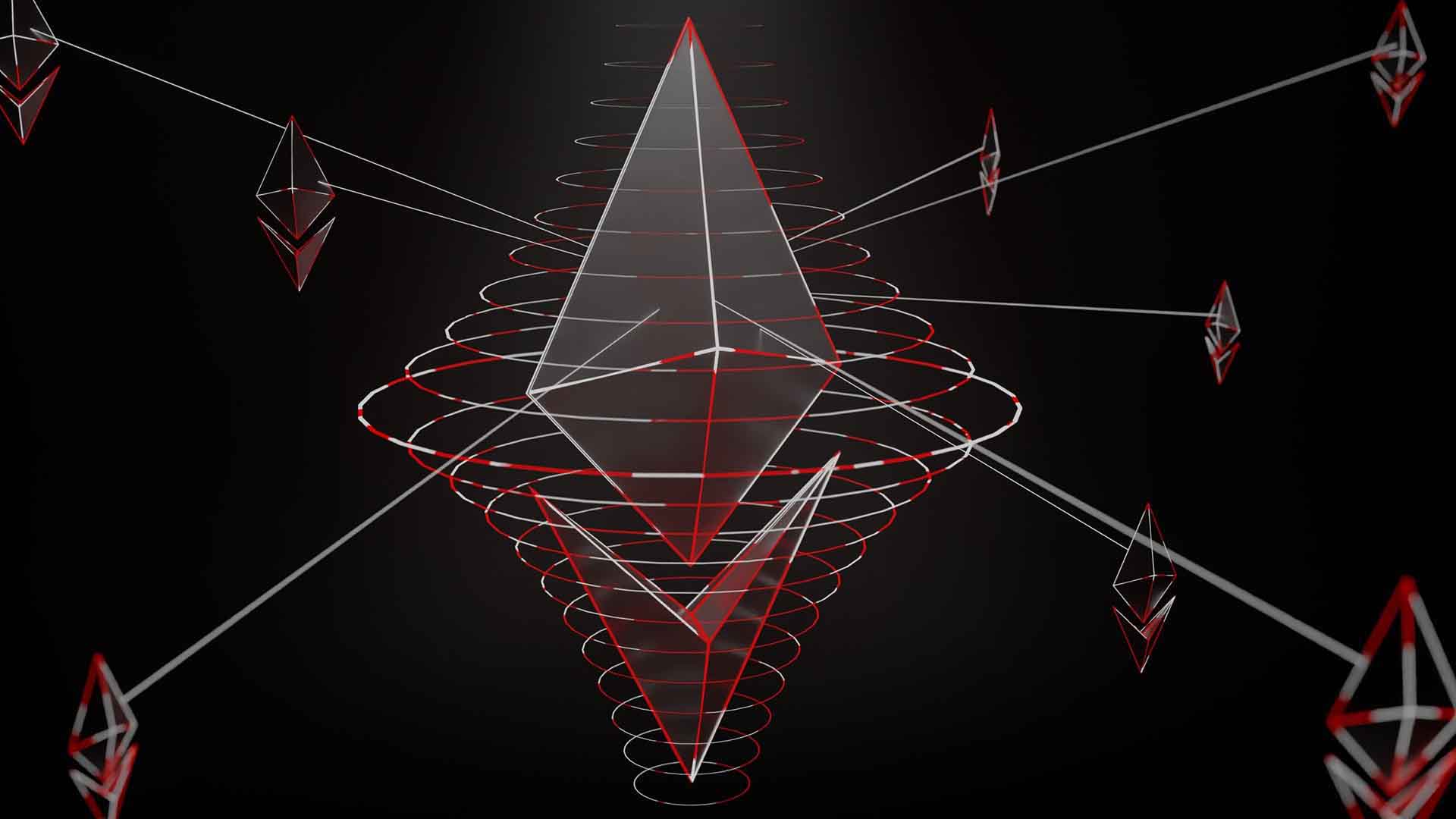What Is Etherscan?
Etherscan is the most trusted tool for navigating all public data on the Ethereum blockchain and is sometimes referred to as “Ethplorer”. This data includes transaction data, wallet addresses, smart contracts, and much more. The application is standalone and is neither sponsored nor administered by the Ethereum Foundation, which is a non-profit organization.
USDC vs USDT: Which stablecoin should you use?
The team behind Etherscan includes seasoned developers and industry professionals, who developed the Etherscan app to make the Ethereum blockchain more accessible to everyday users.
Although Etherscan is a centralized platform, the app makes it easy to search the Ethereum blockchain.
Is Etherscan a wallet?
Etherscan is not an Ethereum wallet, nor a wallet service provider. Users do not receive an Etherscan wallet when searching for the Ethereum blockchain on Etherscan.
Etherscan.io is an independent block explorer based on Ethereum. The Etherscan app tracks blockchain transactions on the Ethereum network. The application then displays the results like a search engine.
This allows users to find transaction details on the Ethereum blockchain, which can reassure someone if the transferred funds have not yet appeared in their wallet.
Must Watch: Can Shiba Inu reach 1 cent?
While Etherscan can track the activity on an Ethereum wallet address, users will need to link the app to an existing crypto wallet to do so.
You may be wondering: Is Etherscan free? Yes, Etherscan is completely free.
What is Etherscan used for?
Etherscan allows users to view assets held on any public Ethereum wallet address. Using Etherscan, enter any Ethereum address in the search field to see the current balance and transaction history of the considered wallet. Etherscan will also show all gas charges and smart contracts that include this address.
Read More: What is NFT and How Does NFT Work? The Ultimate Guide
Users can use Etherscan to:
- Calculate Ethereum gas fees with the Etherscan gas tracker
- Search and verify smart contracts
- View crypto assets owned or associated with a public wallet address
- Watch live transactions taking place on the Ethereum blockchain
- Search for a single transaction made from any Ethereum wallet
- Find out which smart contracts have verified source code and security audit
- Keep track of the number of smart contracts a user has authorized with their wallet
- Review and revoke access to a wallet for all decentralized applications (DApps)
Users can view any Ethereum blockchain transaction on Etherscan. These transactions include failed and pending transactions.
Also Read: What is Blockchain?
Etherscan can also track the progress of an incoming transfer. One way to track a transaction using Etherscan is to search Etherscan.io using its hash key. The hash gives users an estimate of the time it will take to confirm the transaction. The page refreshes when the transaction is complete.
Etherscan also functions as an analytics platform. Anyone can use Etherscan to analyze on-chain metrics such as changes in Ether (ETH) gas costs, as well as track their wallet and monitor their transaction history for suspicious activity.
Do You Know? GTA 6 to include a cryptocurrency rewards system?
Only public information about the Ethereum blockchain is displayed on Etherscan, so information such as a user’s private keys cannot be viewed on the app. Etherscan does not store any private keys and is not involved in any of the transactions involved. The application can no longer be used to resolve a transaction failure.
Do users need an account to use Etherscan?
Users are not required to create an account before using the Etherscan app. However, creating an Etherscan account gives users access to additional features. These features include the ability to track addresses and receive notifications whenever a transaction occurs. Developers can also register for free access to Etherscan’s blockchain explorer data and application programming interfaces (APIs).

Thus, users with accounts can add their addresses to the “watch list” on block explorer to monitor or track their investments. Users can also set alerts to be notified of each incoming transaction via email. Etherscan also provides API services to developers so that they can build decentralized applications.
Etherscan provides the following information for all incoming and outgoing transactions:
- Transaction hash
- Number of blocks in which the transaction was recorded and time at which the transaction was confirmed
- Sender and recipient addresses
- gas costs
- Amount sent
- Total transaction fees
How does Etherscan Work?
To use Etherscan, simply enter any public Ethereum wallet address in the search box at the top of the Etherscan.io homepage. This will allow users to see all transactions associated with that address.
How to Display Transitions on Etherscan?
Exploring a wallet address on Etherscan under the “Transactions” tab will show a list of all ETH transactions (Txns) or transactions that used gas (Gwei) associated with that specific wallet.
BREAKING: Binance (BNB Coin) Price Prediction For 2022, 2023, 2024, 2025, 2030!
Type the wallet address on the Etherscan homepage and click “Search” to be redirected to a page that displays all the information for this wallet. The data will include its ETH balance and US dollar-denominated value, as well as an overview of the wallet’s transaction history.

Click on the Wallet Transactions tab, which opens a new page with details of all transactions involving that address. Details include transaction ID, block height, and when the transaction was completed.

The block height refers to the block in which the transaction was included. Sender and receiver addresses and total transaction fees are also displayed.
To explore and track a single transaction, users will need the transaction hash or ID, or TxHash. A TxHash is a unique string of numbers that identifies a transaction on the blockchain.
Also Read: What is a DAO or Decentralized Autonomous Organization?
When users enter the TxHash in the Etherscan search bar, a list of information about that transaction will be populated on the page. From here, users can navigate to the Transactions tab to view additional information about the said transaction. This data includes whether the status of the transaction was successful, pending, or failed, as well as the total amount that was transferred.
The value of the ETH transaction, as well as the USD value of ETH at the time of the transaction, can also be viewed. Etherscan also displays the timestamp of each transaction in addition to the cost of the transaction, denominated in USD.
How to use the Etherscan Gas Tracker?
“Gas” refers to the transaction fees associated with a transaction to be successfully completed on the Ethereum blockchain. Transaction costs on Ethereum are called gas fees.
Ethereum’s network can get very crowded. When a considerable amount of traffic runs on the Ethereum blockchain due to Ethereum’s auction-based model, the average gas price increases as users compete and bid for their transactions. will be included in the next block. Therefore, transactions are rolled back and some transactions fail.

The price of gas varies depending on the block in which the user’s transaction was included, as well as the degree of network congestion. Additionally, users may not be able to discern an accurate estimate of the gas charges they will need to pay before initiating a transaction.
To accurately determine the gas fees of a transaction, it is best to use Etherscan’s gas tracker. Ether Gas Tracker can do more than just show users the gas price difference at different time intervals. It is also useful for estimating network congestion and transaction cost per transaction.
Bitcoin Price Prediction 2025 – Bulls Target $288,000 and Beyond
The Etherscan gas tracker works like an ETH gas calculator. It examines pending transactions on the Ethereum blockchain to determine the amount of gas required for a transaction.
Users receive an estimate of gas charges so they can adjust the timing of their transactions to avoid high network traffic. This reduces transaction costs and allows for cheaper and smoother transactions, without suffering from the anxiety that comes with not knowing whether a transaction will fail or succeed.
How to use Etherscan to Check wallet sale and history?
To see how a user’s wallet sale has changed over time, search for the wallet address on Etherscan and select “Analytics”. From here, users can view data analytics of a user’s wallet, such as the user’s ETH sale, full transfer history, transactions, and fees paid.

Using Etherscan to Examine Smart Contracts and Wallet Access
Smart contracts can be read and modified without the need for special permissions using the “Read Contract” and “Write Contract” features of the Etherscan app. These tabs provide real-time information on various tokens and smart contracts. Users can also use these features to initiate a token transfer and consider smart contract transactions.
Also Read: What is a Hedge Fund? – The Ultimate GUIDE

Removing a token’s access to the user’s wallet can be achieved using Etherscan’s token trust checker. When users interact with DApps to purchase or trade tokens, they are directly tapping into a user’s wallet with their permission. Therefore, DApps are an attractive target for scammers looking to gain access to users’ Ethereum wallet addresses.
If users see suspicious activity or believe a DApp has been compromised, they can use Etherscan to revoke their access to a specific wallet address. User assets inside the wallet will not be lost, but users can re-authorize the tokens when they access the DApp next time.
Must Watch: ETHEREUM 2.0 IS JUST AROUND THE CORNER
To use Etherscan to review a user’s list of approved tokens, find the user’s wallet address on Etherscan’s token approval checker. This will provide users with a list of all approved smart contract interactions with that wallet. From there, users can connect their wallet to Etherscan and click “revoke” to ensure that the specific DApp no longer has access to the user’s wallet.
Why Etherscan?
Etherscan is one of the main tools for accessing reliable data from the Ethereum blockchain. Etherscan can examine smart contract code, track gas prices, and monitor the Ethereum blockchain in real-time.
Also Read: What is Web3?
Finally, Etherscan is free and does not require user registration to access all of its features. All in all, this is a great starting point for users who want to learn about the full range of features of a blockchain, as well as their Ethereum wallet and the insights they can get from a blockchain explorer.

















